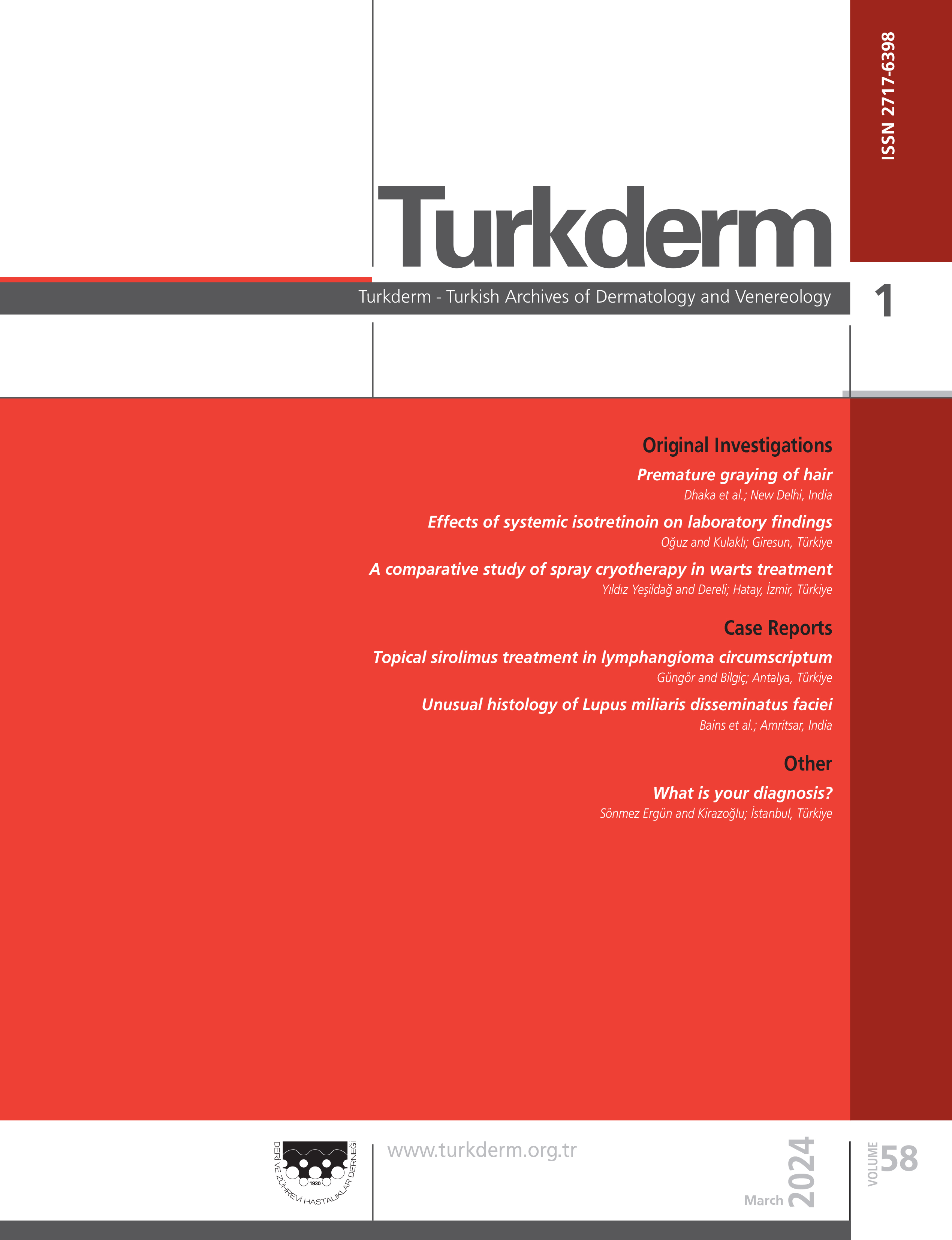Do the fusion regions have a role in the development of basal cell carcinoma?
Serra Kayaçetin1, Ülker Gül21Department of Pathology, Ankara Numune Education and Training Hospital, Ankara, Turkey2Department of Dermatology and Venereology, Akdeniz University School of Medicine, 07059, Antalya, Turkey
Background and Design: Basal cell carcinoma (BCC) is the most frequently observed cancer. Its ethiopathogenesis is not totally clarified. In recent years one of the factors mentioned on ethiopathogenesis is fusion regions. In our study we aimed to investigate whether the number of BCC is more or not in anatomic areas which contain more fusion regions.
Materials and Methods: Three hundred twenty-eight BCC case whose anatomic region is indicated in histopathology report is taken into study. Fusion regions are determined according to the mapping system given in Tessiers publication. First the number of total fusion region for each anatomic area on face is calculated. Then, the number of BCC located in each anatomic area and the number of fusion region located in the same anatomic area are compared. In conclusion findings are commented with respect to cause result relationship.
Results: The most important anatomic areas with respect to fusion region number were forehead and lip. In forehead and lip there were 11fusion regions. 34 BCC on forehead and 14 BCC on lip are observed. There were 10 fusion regions on around the eye and a total of 74 BCC were observed on both periorbital area. But 9 fusion area is detected on nose area where BCC is mostly present (135).
Conclusion: More BCC is not observed in anatomic areas where fusion region is plenty compared to anatomic areas where fusion region is less. As a result; in BCC development, it is seen that only fusion regions do not have ethiopathogenetic importance.
Bazal hücreli kanser gelişiminde füzyon alanlarının rolü var mı?
Serra Kayaçetin1, Ülker Gül21Ankara Numune Eğitim ve Araştırma Hastanesi, Patoloji Kliniği, Ankara, Türkiye2Akdeniz Üniversitesi Tıp Fakültesi, Deri ve Zührevi Hastalıklar Anabilim Dalı, Antalya, Türkiye
Amaç: Bazal hücreli kanser (BHK) en sık gözlenen deri kanseridir. Hastalığın etiyopatogenezi henüz tam olarak aydınlatılamamıştır. Etiyopatogenezde çeşitli çevresel ve genetik faktörlerin rol oynadığına inanılmaktadır. Son yıllarda etiyopatogenezde bahsedilen faktörlerden biri de füzyon alanlarıdır. Çalışmamızda füzyon alanlarını daha çok içeren anatomik bölgelerde BHK sayısının daha fazla olup olmadığını araştırmayı amaçladık.
Gereç ve Yöntem: Çalışmaya histopatolojik raporunda anatomik bölgesi belirtilmiş 328 BHK olgusu alındı. Füzyon alanları, Tessierin yayınındaki haritalandırma sistemine göre belirlendi. İlk olarak yüzdeki her bir anatomik bölgeye düşen toplam füzyon alanı sayısı hesaplandı. Daha sonra, her bir anatomik bölgede bulunan BHK sayısı ile aynı anatomik bölgede bulunan füzyon alanı sayısı birbiri ile kıyaslandı. Sonuç olarak bulgular neden-sonuç ilişkisi açısından yorumlandı.
Bulgular: Füzyon alan sayısı açısından en önemli anatomik bölge alın ve dudaktı. Alın ve dudakta 11 füzyon alanı bulunmaktaydı. Alında 34 ve dudakta 14 BHK gözlendi. Göz çevresinde 10 füzyon alanı vardı ve her 2 göz çevresinde toplam 74 BHK tesbit edildi. Ancak BHKnın en çok bulunduğu (135) burun bölgesinde ise 9 füzyon alanı tespit edildi.
Sonuç: Füzyon alanının çok olduğu anatomik bölgelerde, füzyon alanının daha az bulunduğu anatomik bölgelere kıyasla daha fazla BHKya rastlanılmadı. Sonuç olarak BHK gelişiminde, tek başına füzyon alanlarının etiyopatogenetik bir öneme sahip olmadığı görülmektedir.
Corresponding Author: Ülker Gül, Türkiye
Manuscript Language: Turkish






















